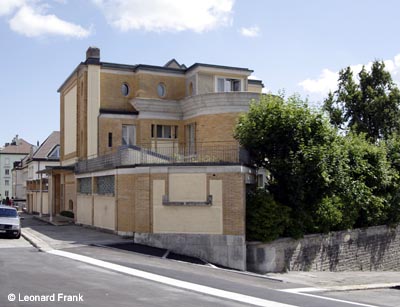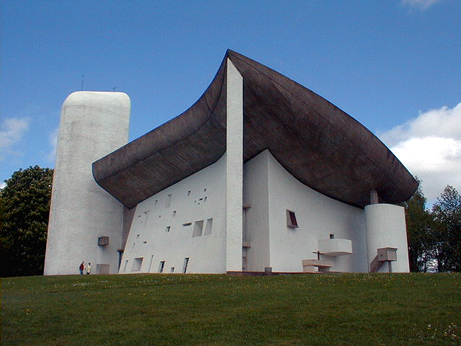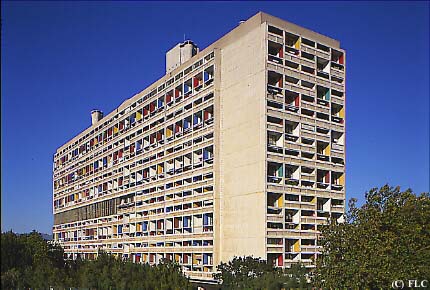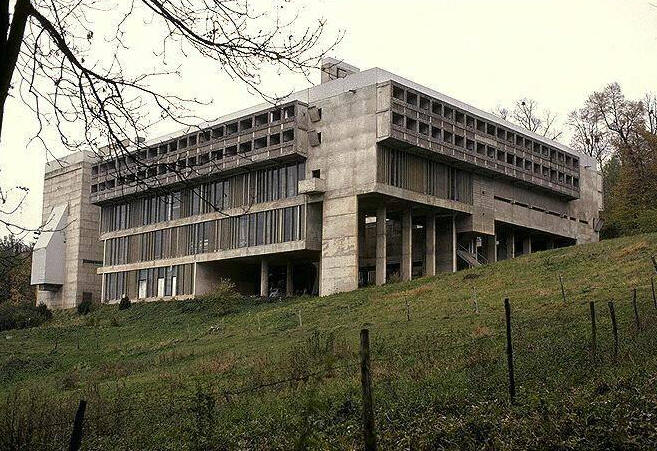<Back to Index>
- Mathematician Julius Wilhelm Richard Dedekind, 1831
- Architect Charles-Édouard Jeanneret-Gris (Le Corbusier), 1887
- King of the French Louis-Philippe I, 1773
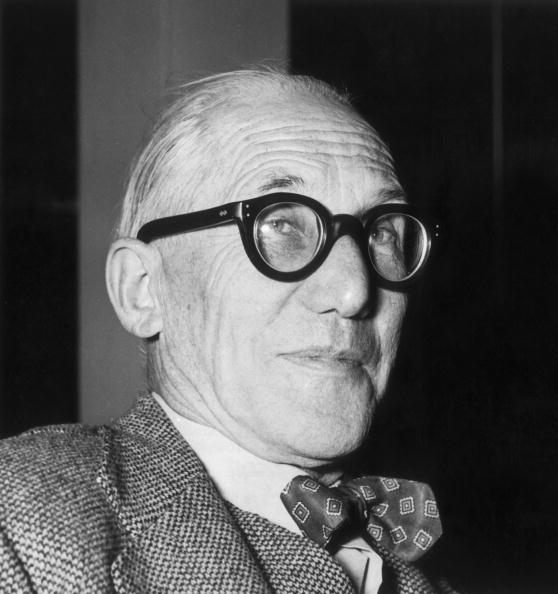

Charles-Édouard Jeanneret-Gris, who chose to be known as Le Corbusier (October 6, 1887 – August 27, 1965), was a Swiss-French architect, designer, urbanist, writer and also painter, who is famous for being one of the pioneers of what now is called Modern architecture or the International style. He was born in Switzerland and became a French citizen in his 30s.
He
was a pioneer in studies of modern high design and was dedicated to
providing better living conditions for the residents of crowded cities.
Later commentators have criticized Le Corbusier's monoliths as soulless
and expressive of his arrogance in pioneering his form of architecture. His
career spanned five decades, with his buildings constructed throughout
central Europe, India, Russia, and one each in North and South America.
He was also an urban planner, painter, sculptor, writer, and modern furniture designer. Le
Corbusier adopted his pseudonym in the 1920s, deriving it in part from
the name of a distant ancestor, "Lecorbésier." In the absence of
a first name, some have suggested it suggests "a physical force as much
as a human being," and brings to mind the French verb courber, to bend. He was born as Charles-Édouard Jeanneret-Gris in La Chaux-de-Fonds, a small city in Neuchâtel canton in north-western Switzerland, in the Jura mountains, which is just five kilometres across the border from France. He attended a kindergarten that used Fröbelian methods. Le Corbusier was attracted to the visual arts and studied at the La-Chaux-de-Fonds Art School under Charles L' Eplattenier, who had studied in Budapest and Paris. His architecture teacher in the Art School was the architect René Chapallaz, who had a large influence on Le Corbusier's earliest houses. In
his early years he would frequently escape the somewhat provincial
atmosphere of his hometown by traveling around Europe. About 1907, he
traveled to Paris, where he found work in the office of Auguste Perret, the French pioneer of reinforced concrete. In 1908, he studied architecture in Vienna with Josef Hoffmann. Between October 1910 and March 1911, he worked near Berlin for the renowned architect Peter Behrens, where he might have met Ludwig Mies van der Rohe and Walter Gropius. He became fluent in German. Both of these experiences proved influential in his later career. Later in 1911, he journeyed to the Balkans and visited Greece and Turkey, filling sketchbooks with renderings of what he saw, including many famous sketches of the Parthenon, whose forms he would later praise in his work Vers une architecture (1923) ("Towards an Architecture," but usually translated into English as "Towards a New Architecture"). Le Corbusier taught at his old school in La-Chaux-de-Fonds during World War I,
not returning to Paris until the war was over. During these four years
in Switzerland, he worked on theoretical architectural studies using
modern techniques. Among
these was his project for the "Dom-ino" House (1914–1915). This model
proposed an open floor plan consisting of concrete slabs supported by a
minimal number of thin, reinforced concrete columns around the edges,
with a stairway providing access to each level on one side of the floor
plan. This
design became the foundation for most of his architecture for the next
ten years. Soon he would begin his own architectural practice with his
cousin, Pierre Jeanneret (1896–1967), a partnership that would last until 1940. In 1918, Le Corbusier met the Cubist painter, Amédée Ozenfant,
in whom he recognized a kindred spirit. Ozenfant encouraged him to
paint, and the two began a period of collaboration. Rejecting Cubism as
irrational and "romantic," the pair jointly published their manifesto, Après le cubisme and established a new artistic movement, Purism. Ozenfant and Jeanneret established the Purist journal L'Esprit nouveau. He was good friends with the Cubist artist Fernand Léger. In the first issue of the journal, in 1920, Charles-Edouard Jeanneret adopted Le Corbusier, an altered form of his maternal grandfather's name, "Lecorbésier", as a pseudonym, reflecting his belief that anyone could reinvent himself. Some
architectural historians claim that this pseudonym translates as "the raven-like one." Adopting
a single name to identify oneself was in vogue by artists in many
fields during that era, especially among those in Paris. (The
name "Le Corbusier" is today a registered trademark (US Reg. 2073285)
owned by the Fondation Le Corbusier and licensed for the production of
designs created by Charles Jeanneret alone and with his co-authors Charlotte Perriand and Pierre Jeanneret.) Between
1918 and 1922, Le Corbusier built nothing, concentrating his efforts on
Purist theory and painting. In 1922, Le Corbusier and Ozenfant opened a
studio in Paris at 35 rue de Sèvres. His
theoretical studies soon advanced into several different single-family
house models. Among these was the Maison "Citrohan", a pun on the name
of the French Citroën automaker,
for the modern industrial methods and materials Le Corbusier advocated
using for the house. Here, Le Corbusier proposed a three-floor
structure, with a double-height living room, bedrooms on the second
floor, and a kitchen on the third floor. The roof would be occupied by
a sun terrace. On the exterior Le Corbusier installed a stairway to
provide second-floor access from ground level. Here, as in other
projects from this period, he also designed the façades to
include large expanses of uninterrupted banks of windows. The house
used a rectangular plan, with exterior walls that were not filled by
windows, left as white, stuccoed spaces. Le Corbusier and Jeanneret
left the interior aesthetically spare, with any movable furniture made
of tubular metal frames. Light fixtures usually comprised single, bare
bulbs. Interior walls also were left white. Between 1922 and 1927, Le
Corbusier and Pierre Jeanneret designed many of these private houses
for clients around Paris. In Boulogne-sur-Seine and the 16th arrondissement of Paris, Le Corbusier and Pierre Jeanneret designed and built the Villa Lipschitz, Maison Cook, Maison Planeix, and the Maison La Roche/Albert Jeanneret, which now houses the Fondation Le Corbusier. Le Corbusier took French citizenship in 1930. For
a number of years French officials had been unsuccessful in dealing
with the squalor of the growing Parisian slums, and Le Corbusier sought
efficient ways to house large numbers of people in response to the
urban housing crisis. He believed that his new, modern architectural
forms would provide a new organizational solution that would raise the
quality of life for the lower classes. His Immeubles Villas (1922) was
such a project that called for large blocks of cell-like individual
apartments stacked one on top of the other, with plans that included a
living room, bedrooms and kitchen, as well as a garden terrace. Not
merely content with designs for a few housing blocks, soon Le Corbusier
moved into studies for entire cities. In 1922, he presented his scheme
for a "Contemporary City" for three million inhabitants (Ville Contemporaine).
The centerpiece of this plan was the group of sixty-story, cruciform
skyscrapers; steel-framed office buildings encased in huge curtain
walls of glass. These skyscrapers were set within large, rectangular
park-like green spaces. At the center was a huge transportation hub,
that on different levels included depots for buses and trains, as well
as highway intersections, and at the top, an airport. He had the
fanciful notion that commercial airliners would land between the huge
skyscrapers. Le Corbusier segregated pedestrian circulation paths from
the roadways and glorified the use of the automobile as a means of
transportation. As one moved out from the central skyscrapers, smaller
low-story, zigzag apartment blocks (set far back from the street amid
green space), housed the inhabitants. Le Corbusier hoped that
politically-minded industrialists in France would lead the way with
their efficient Taylorist and Fordist strategies adopted from American
industrial models to reorganize society. As Norma Evenson has put it,
"the proposed city appeared to some an audacious and compelling vision
of a brave new world, and to others a frigid megalomaniacally scaled
negation of the familiar urban ambient." In this new industrial spirit, Le Corbusier contributed to a new journal called L'Esprit Nouveau that
advocated the use of modern industrial techniques and strategies to
transform society into a more efficient environment with a higher
standard of living on all socioeconomic levels. He forcefully argued
that this transformation was necessary to avoid the spectre of
revolution that would otherwise shake society. His dictum,
"Architecture or Revolution," developed in his articles in this
journal, became his rallying cry for the book Vers une architecture (Toward an Architecture, previously mistranslated into English as Towards a New Architecture), which comprised selected articles he contributed to L'Esprit Nouveau between 1920 and 1923. In this book, Le Corbusier followed the influence of Walter Gropius and reprinted several photographs of North American factories and grain elevators. Theoretical
urban schemes continued to occupy Le Corbusier. He exhibited his "Plan
Voisin," sponsored by another famous automobile manufacturer, in 1925.
In it, he proposed to bulldoze most of central Paris north of the
Seine, and replace it with his sixty-story cruciform towers from the
Contemporary City, placed in an orthogonal street grid and park-like
green space. His scheme was met with criticism and scorn from French
politicians and industrialists, although they were favorable to the
ideas of Taylorism and Fordism underlying Le Corbusier designs.
Nonetheless, it did provoke discussion concerning how to deal with the
cramped, dirty conditions that enveloped much of the city. In the
1930s, Le Corbusier expanded and reformulated his ideas on urbanism,
eventually publishing them in La Ville radieuse (The
Radiant City) of 1935. Perhaps the most significant difference between
the Contemporary City and the Radiant City is that the latter abandons
the class-based stratification of the former; housing is now assigned
according to family size, not economic position.Some have read dark overtones into The Radiant City:
from the "astonishingly beautiful assemblage of buildings" that was
Stockholm, for example, Le Corbusier saw only “frightening chaos and
saddening monotony.” He
dreamed of "cleaning and purging" the city, bring in "a calm and
powerful architecture" — referring to steel, plate glass, and reinforced
concrete. Though Le Corbusier's designs for Stockholm did not succeed,
later architects took his ideas and partly "destroyed" the city with
them. La Ville radieuse also marks Le Corbusier's increasing dissatisfaction with capitalism and his turn to the right-wing syndicalism of Hubert Lagardelle. During the Vichy regime,
Le Corbusier received a position on a planning committee and made
designs for Algiers and other cities. The central government ultimately
rejected his plans, and after 1942 Le Corbusier withdrew from political
activity.
After World War II,
Le Corbusier attempted to realize his urban planning schemes on a small
scale by constructing a series of "unités" (the housing block
unit of the Radiant City) around France. The most famous of these was
the Unité d'Habitation of
Marseilles (1946–1952). In the 1950s, a unique opportunity to translate
the Radiant City on a grand scale presented itself in the construction of Chandigarh, the new capital for the Indian states of Punjab and Haryana. Le Corbusier was brought on to develop the plan of Albert Mayer. Against his doctor's orders, on August 27, 1965, Le Corbusier went for a swim in the Mediterranean Sea at Roquebrune-Cap-Martin, France. His body was found by bathers and he was pronounced dead at 11
a.m. It was assumed that he suffered a heart attack, at the age of
seventy-seven. His death rites took place at the courtyard of the Louvre Palace on September 1, 1965 under the direction of writer and thinker André Malraux, who was at the time France's Minister of Culture. Le
Corbusier's death had a strong impact on the cultural and political
world. Homages were paid worldwide and even some of Le Corbusier's
worst artistic enemies, such as the painter Salvador Dalí, recognised his importance (Dalí sent a floral tribute). The President of the United States Lyndon B. Johnson said:
"His influence was universal and his works are invested with a
permanent quality possessed by those of very few artists in our
history". The Soviet Union added,
"Modern architecture has lost its greatest master". Japanese TV
channels decided to broadcast, simultaneously to the ceremony, his Museum in Tokyo, in what was at the time a unique media homage. Visitors may find his grave site in the cemetery above Roquebrune-Cap-Martin in between Menton and Monaco in southern France. The Fondation Le Corbusier (or FLC) functions as his official Estate. The U.S. copyright representative for the Fondation Le Corbusier is the Artists Rights Society.


